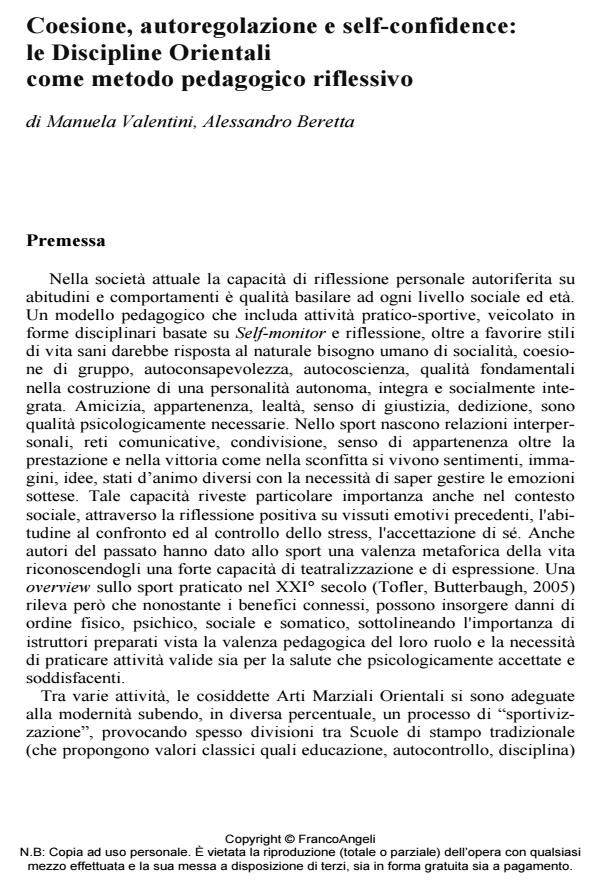Cohesion, Self-regulation, Self-confidence: the Pedagogical Reflective Methods of Oriental Disciplines
Journal title EDUCATIONAL REFLECTIVE PRACTICES
Author/s Manuela Valentini, Alessandro Beretta
Publishing Year 2016 Issue 2016/2
Language Italian Pages 15 P. 146-160 File size 203 KB
DOI 10.3280/ERP2016-002010
DOI is like a bar code for intellectual property: to have more infomation
click here
Below, you can see the article first page
If you want to buy this article in PDF format, you can do it, following the instructions to buy download credits

FrancoAngeli is member of Publishers International Linking Association, Inc (PILA), a not-for-profit association which run the CrossRef service enabling links to and from online scholarly content.
This article examines possible pedagogical applications of reflective methods not only in "Evolutive Age", similar to those used in oriental discipline settings, in educational or other contexts. Through extensive bibliographic research focusing on theoretical sources and empirical data and culminating in an analysis of findings related to the reported psychosocial characteristics under study, the author highlights the importance of rediscovering such disciplines from a free modern perspective, without preconditioning, and with opportunities for a wide range of applications
Manuela Valentini, Alessandro Beretta, Coesione, autoregolazione e self-confidence: le Discipline Orientali come metodo pedagogico riflessivo in "EDUCATIONAL REFLECTIVE PRACTICES" 2/2016, pp 146-160, DOI: 10.3280/ERP2016-002010